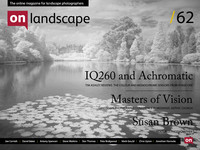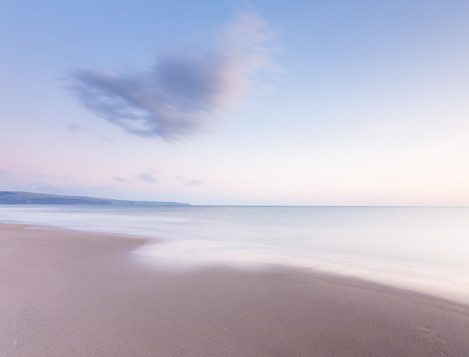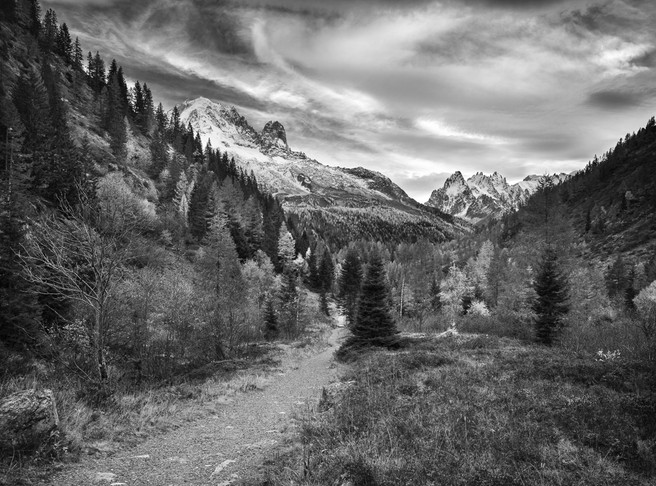Interview

Tim Parkin
Amateur Photographer who plays with big cameras and film when in between digital photographs.

Pete Bridgwood
I started making photographs in 1978 using black and white film and manual cameras. I processed all my own films and prints using wet-process in a traditional darkroom. My workflow is now exclusively digital. I am passionate about the emotional aspects of photography. I see the photographic image as a three-way relationship between the subject, the viewer and the photographer. The joy of creative photography comes from encapsulating the soul or spirit of the location or subject and communicating that captured perception to the viewer of the final print. For me, even in this digital-age, it’s all about the final print.
Tim: Can you tell us a little bit about the exhibition – it’s been running for a few years now hasn’t it?
Pete: Yes. This is the third one we’ve done. Four years ago we did the first one with Charlie Waite and then two years ago we did one with David Noton and this year we’ve got Joe Cornish as our Master Photographer. The idea was that we would create a showcase for the work of a lot of emerging photographers in the first instance with a master photographer invited. What’s happened since the first one is that the initial photographers who were involved, a lot of them are still involved now and there own work has come on and shone in it’s own right really.
T: We were chatting with Chris about how his work developed over the last four years quite dramatically.
P: Yes and what’s wonderful this year is to see how all of the styles have evolved. It’s fascinating. I’m so proud of the guys for the show that they’ve put on. I don’t know if you agree but the quality of the work is great this year.
T: What is nice is to see ‘themed’ work coming out. In David Baker’s Hebridean work and obviously in Dav’s work sitting together as a coherent set of images.
P: I’m greatly respectful of people like Dav and David who can concentrate there efforts on a specific area. I was up on Scotland with David and we were standing by a loch with Stac Pollaidh reflected and about to witness the most amazing sunset with little cirrus clouds coming off the top of the mountain and I was in my element with my 1ds3 was on the tripod. Then David comes out with his little compact camera and I say “David, will you look at this!” and he says “It’s interesting isn’t it” and starts to take photographs of the branches around the loch because it wasn’t coastal or Sea Fever. How fantastic that he can concentrate his efforts so single-mindedly in such an artistic and creative way.
T: It seems an undervalued trait the ability to ignore things in landscape photography. The ability to exclude things, to say “I’m not interested in that because I’m doing this”. It’s very difficult to do when you’ve got something absolutely stunning to one side of you, to not take a photograph of it.
P: It’s the first time I’ve ever met anyone like that. To travel to such amazing and varied landscapes and to have a photographer not be interested in these big pictures is amazing. But then when he got to the coast he was like a man possessed.
Joe Cornish was such a great master to have. I’ve just been around looking at his images.
T: He has such a varied set of images on show.
P: Joe is showing a lot of images that have never been seen before and they’re amazing.
T: So can you pick out a couple of the images you are most happy with.
P: Well it’s interesting. There is one called ‘passing cloud’ which a shot I made down in Talybont in Wales but could have been made anywhere really. I was standing on the beach and saw this cloud coming into the scene and thought “Wow! I’ve got to find some foreground interest” so I ran down the beach and put the tripod down where this wave was coming out a little bit further than the rest to reflect the shape of the cloud. It’s a personal favourite because it locks in the background and the foreground – that’s a lovely way of paradoxically showing depth. So that’s a personal favourite.
I’ve also tried to show a few more muted image in my MOVE exhibit this year. I’m getting quite into these colours on this image called ‘Boat’ - which is made on the XPro 1 actually – it shows just how good the quality of the XPro 1 is that you can blow up the images to a 16”x20” print.
It is more than capable of creating images like that. The great thing about that was that the week we were up there was pretty overcast and the colours were quite subdued and it gives these muted what I call ‘heritage’ colours, if that means anything. Steely greys, silvery blues. I’m really getting into that now. I really quite like those colours
T: And your other image?
P: And over here we’ve got a sort of Ansel Adams copy and the intention with this one was to create an intentional derivative photograph. It’s part of a new project looking at creating stylistic copies of other artists works. This particular photograph is a view down a footpath that looks onto the Chamonix mountain range behind. So what I’m planning is a whole series – Constable, Turner, etc. They might get a little more difficult though because at least with black and white you don’t have to worry about the colour.
T: I particularly like the range of smaller images you have on show and this one of the alley is wonderful
P: That was in Gordes in a little town in Provence and was on a trip I did with Chris Upton – about 2,500 miles around france in a 10 day period. This is outside my comfort zone really as I’m more of a big vista photographer. But these are quite secluded shots made all over the town. The texture and the contrast in black and white become more important.
T: I was impressed with some of the Salgado exhibition prints made with digital using Silver FX.
P: Yes, you’re quite right this is a Silver FX process. The large one, the Ansel Adams, is a Photoshop image. Silver FX does seem to create artifacts when you blow the images up large so for the big one I did it entirely in Photoshop with dodging and burning etc. I may just not be using Silver FX correctly though.
T: A final question for you, Master of Vision 2015?
P: You know I’ve got no idea – there are so many!
T: I’ll make it theoretical for you being as I don’t want to pre-empt you. If you could resurrect a photographer..
P: Well obviously it would be Ansel Adams then, every time. He’s a genius. But for 2015 we still need to get permission and then we’ll see what happens.



